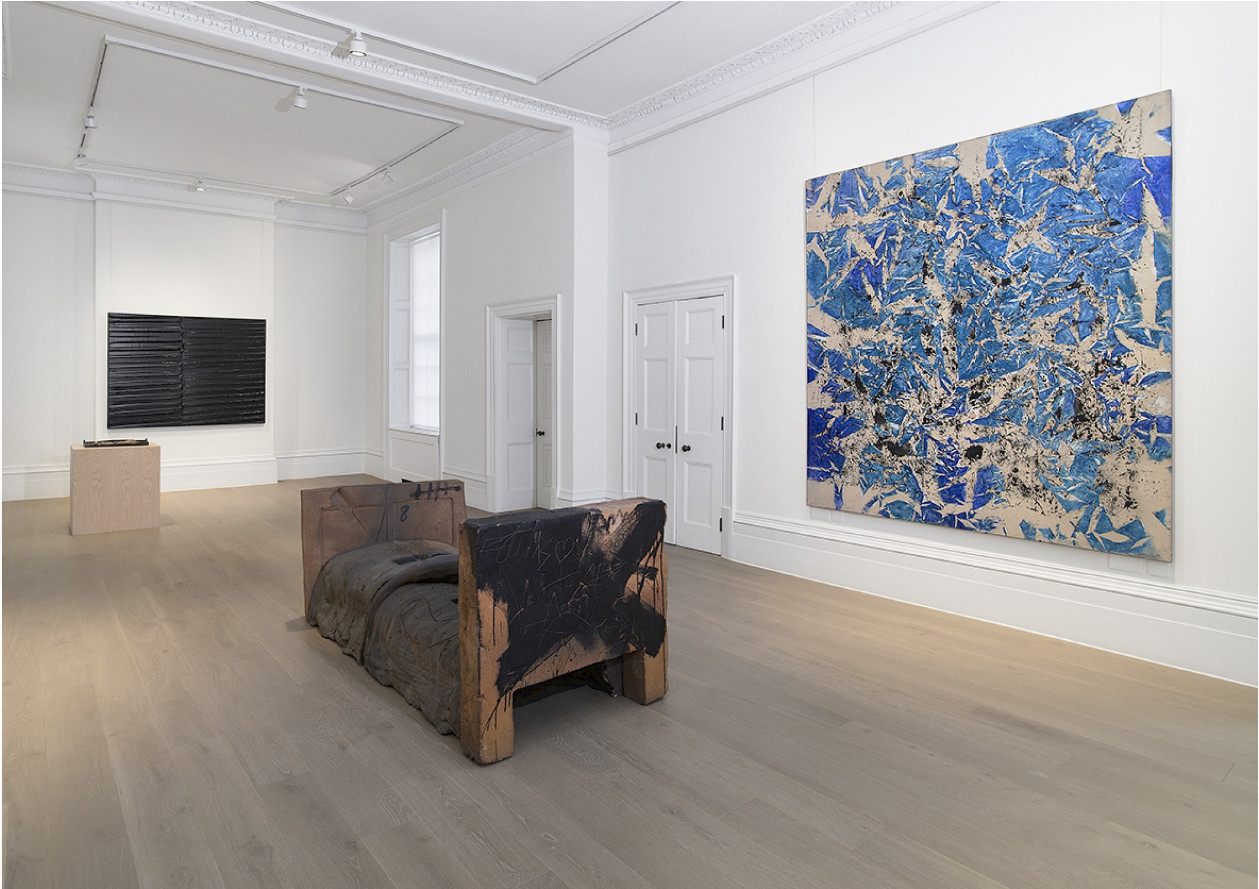Timothy Taylor, London
Simon Hantaï, Pierre Soulages and Antoni Tàpies
15 Bolton Street, London
The mature work of Antoni Tàpies, Simon Hantaï and Pierre Soulages finds each artist addressing their materials with determined irreverence. Each in his own way has pushed painting to its sculptural limits: Tàpies with the introduction of sand, cement, marble dust and objects into his painted surfaces; Hantaï in laboriously bundling and folding canvases before approaching them with a brush; Soulages, in using thick oil paint as a material to be moulded and gouged.
Born within a few years of one another - Soulages in Aveyron in 1919, Hantaï near Budapest in 1922, Tàpies in Barcelona in 1923 - they came of age as artists amid the poverty and bomb-shattered debris of post war Europe. For each, adolescence and young manhood was accompanied by conflict. The Spanish Civil War started in 1936 as Tàpies turned thirteen years old. The Second World War commenced when Soulages was nineteen: he was mobilised the following year. Demobbed in 1941, he fled one occupied city after another - first Paris, then Montpellier - avoiding deportation to Nazi Germany for Service du travail obligatoire. Hungary remained turbulent in the years after the war, struggling under the influence of the Soviet Union: Hantaï left for Paris in 1948, the year before declaration of the one-party Hungarian People's Republic.
